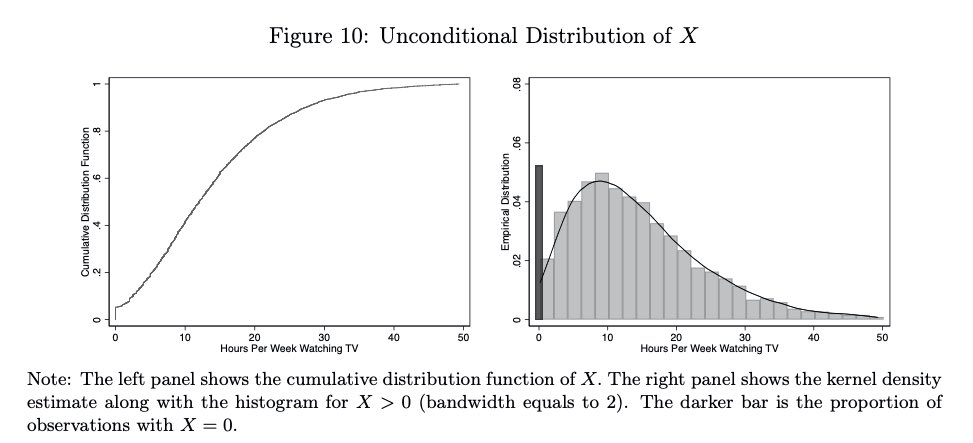
I’m an econometrician @ECON_Terry (UGA) Endogeneity, discontinuities, bunching, health and early childhood.
How to get URL link on X (Twitter) App


https://twitter.com/fedresearch/status/1307012310502957057We focus here on bunching at one of the ends of the support, which turns out to be very common. For example, TV watching, enrichment activities, maternal labor supply, smoking amounts, all have bunching at zero, and the list of variables where this happens goes on and on. 2/


 In principle, this certainly makes sense. Near the threshold all processes we study are fairly linear. However, as we move out convexities and concavities appear and bias increases. If we did a quadratic instead of linear fit, we could go father away from the threshold. 2/8
In principle, this certainly makes sense. Near the threshold all processes we study are fairly linear. However, as we move out convexities and concavities appear and bias increases. If we did a quadratic instead of linear fit, we could go father away from the threshold. 2/8
https://twitter.com/agnesquis/status/1278330232030859264Here is why time use has potential beyond its current uses: bunching. For almost every time use activity there are plenty of people who do zero of it. This bunching can be used to test endogeneity in models and even to correct for endogeneity.

 We had some versions of this out before, but it took us a while do understand this problem fully. At the essence, it is an impossible problem. We show which assumptions must be done to gain each piece of information. 2/
We had some versions of this out before, but it took us a while do understand this problem fully. At the essence, it is an impossible problem. We show which assumptions must be done to gain each piece of information. 2/